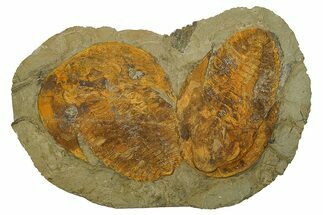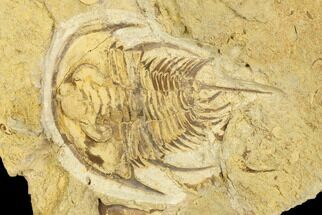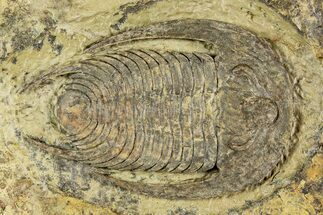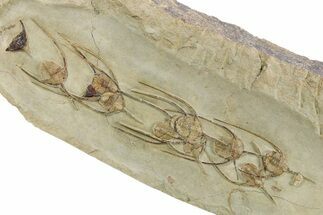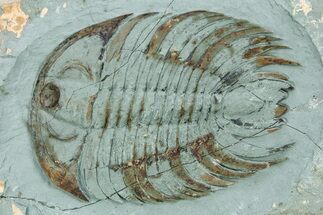This Specimen has been sold.
Aciculolenus, Wujiajiania & Labiostria Trilobites - Mckay Group
This is a cool association of three different genus of trilobites from the Mckay Group of British Columbia. The rare one of this piece is a .25" long Aciculolenus palmeri. There are also a pair of Wujiajiania on the same side of the shale and a Labiostria molt on the back of the rock.
About Trilobites
Trilobites are an extinct class of marine arthropods that thrived for nearly 270 million years, from the early Cambrian to the end of the Permian period (around 521 to 252 million years ago). They are one of the most successful and diverse groups in the history of life, with over 25,000 described species spanning a wide range of sizes, shapes, and ecological niches. Known for their distinctive, segmented exoskeletons, trilobites provide invaluable insights into the evolutionary history of arthropods and the dynamics of ancient marine ecosystems.
Trilobites are an extinct class of marine arthropods that thrived for nearly 270 million years, from the early Cambrian to the end of the Permian period (around 521 to 252 million years ago). They are one of the most successful and diverse groups in the history of life, with over 25,000 described species spanning a wide range of sizes, shapes, and ecological niches. Known for their distinctive, segmented exoskeletons, trilobites provide invaluable insights into the evolutionary history of arthropods and the dynamics of ancient marine ecosystems.
SPECIES
Aciculolenus palmeri, Wujiajiania sutherlandi & Labiostria westropi
AGE
LOCATION
Tanglefoot Creek, North of Cranbrook, British Columbia
FORMATION
McKay Group - Elvinia Biozone
SIZE
Rock 4.3 x 3.7", Largest trilobite .4"
CATEGORY
SUB CATEGORY
ITEM
#212692
We guarantee the authenticity of all of our specimens.
 Reviews
Reviews


